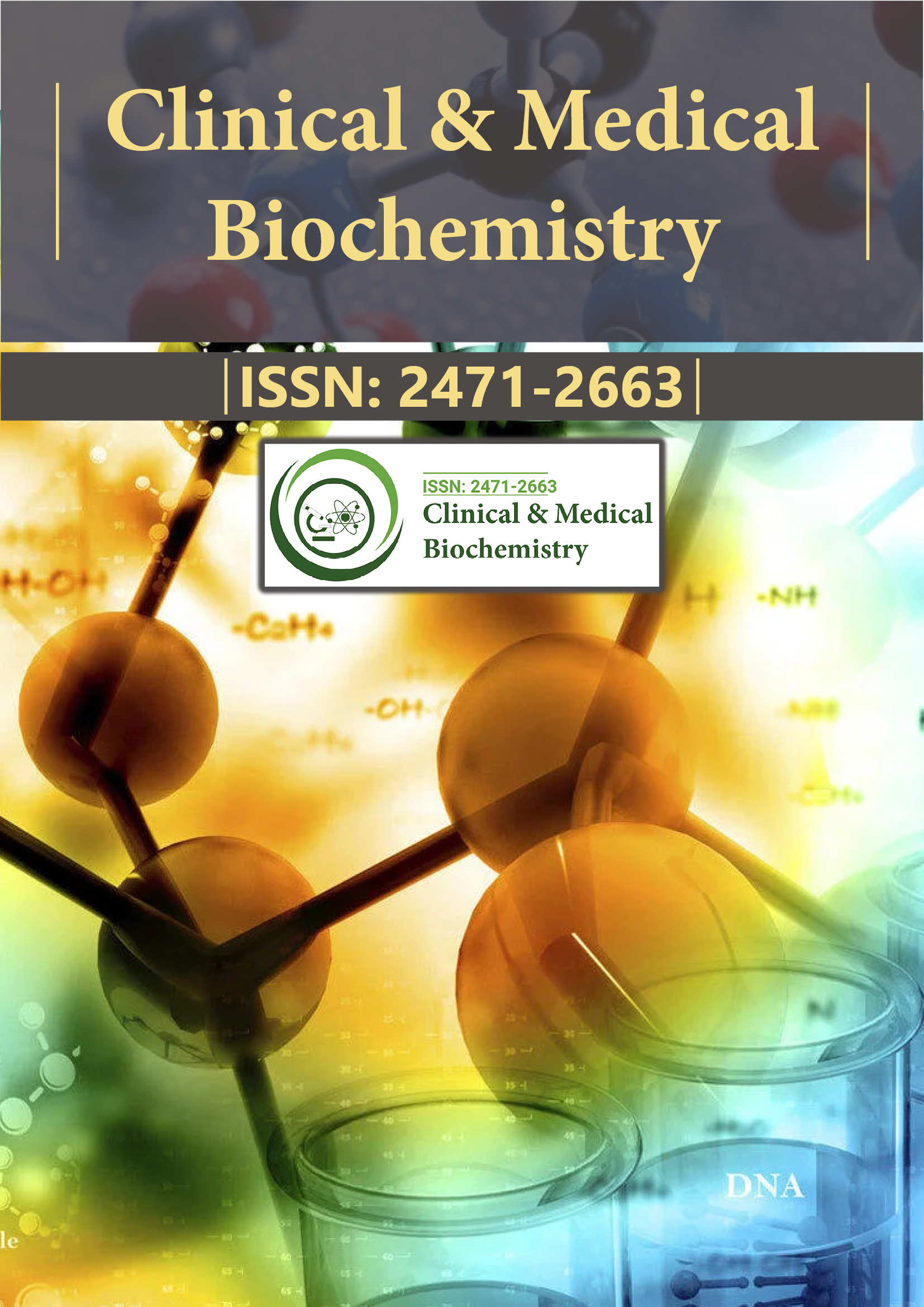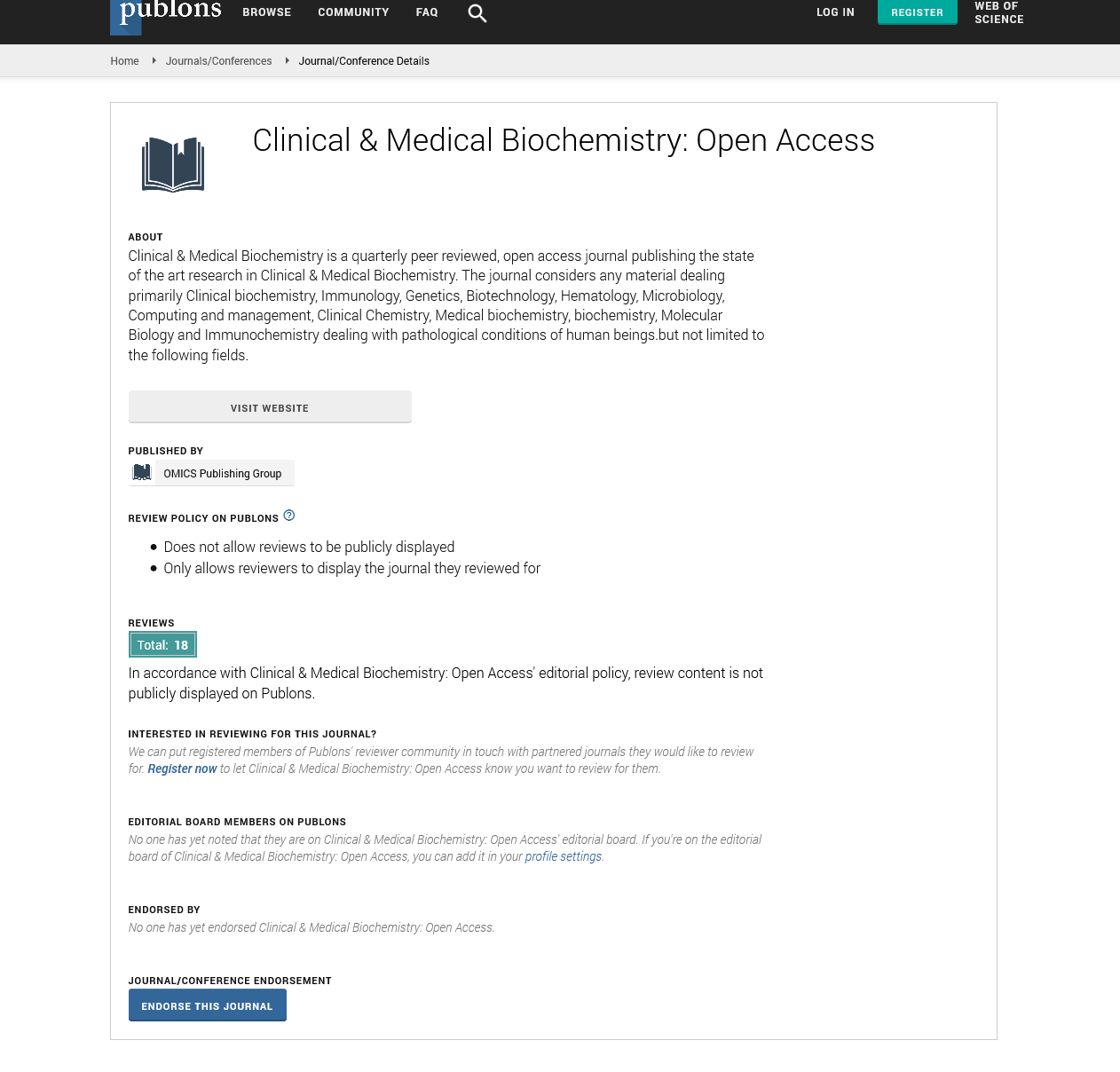Indexed In
- RefSeek
- Directory of Research Journal Indexing (DRJI)
- Hamdard University
- EBSCO A-Z
- OCLC- WorldCat
- Scholarsteer
- Publons
- Euro Pub
- Google Scholar
Useful Links
Share This Page
Journal Flyer

Open Access Journals
- Agri and Aquaculture
- Biochemistry
- Bioinformatics & Systems Biology
- Business & Management
- Chemistry
- Clinical Sciences
- Engineering
- Food & Nutrition
- General Science
- Genetics & Molecular Biology
- Immunology & Microbiology
- Medical Sciences
- Neuroscience & Psychology
- Nursing & Health Care
- Pharmaceutical Sciences
Perspective - (2023) Volume 9, Issue 2
Synthesis and Degradation of Glycine and the Role of Glycine Therapy in Organ Transplantation Failure Prevention
Goro Honjo*Received: 03-Mar-2023, Manuscript No. CMBO-23-20709; Editor assigned: 06-Mar-2023, Pre QC No. CMBO-23-20709 (PQ); Reviewed: 20-Mar-2023, QC No. CMBO-23-20709; Revised: 27-Mar-2023, Manuscript No. CMBO-23-20709 (R); Published: 03-Apr-2023, DOI: 10.35841/2471-2663.23.9.155
Description
Glycine is a simple amino acid without a L or D chemical structure. Glycine is a component of extracellular structural proteins like elastin and collagen. Glycine is regarded as a nutritionally optional amino acid for animals including pigs, rats, and people. Little amounts of glycine deficiency are not damaging to health, but severe deficiency can cause immune system failure, stunted growth, aberrant nutrient metabolism, and other negative health impacts. Hence, in order to promote healthy growth in humans and other mammals, glycine is regarded as a conditionally essential amino acid. Methyl groups are formed in mammalian tissues during the breakdown of choline to glycine. In adult rats, 40%-45% of choline uptake is converted to glycine, and this value can sometimes reach 70% when choline uptake is extremely low. By converting choline to betaine via betaine aldehyde dehydrogenase and choline dehydrogenase, the three methyl groups of choline are readily available for three different conversions: sarcosine into glycine via sarcosine dehydrogenase enzyme, using betaine from betainehomocysteine methyltransferase as methyl donor and converting homocysteine.
Sarcosine dehydrogenase and dimethylglycine dehydrogenase are mitochondrial flavoenzymes found in the pancreas, lungs, liver, kidneys, oviduct, and thymus.
Glycine and sarcosine can be converted to each other via transmethylation. Sarcosine dehydrogenase regulates the ratio of S-adenosylhomocysteine to S-adenosylmethionine in the glycinesarcosine cycle. S-adenosylhomocysteine to Sadenosylmethionine conversion has a large impact on cellular methyl group transfer reactions. If the choline content of the diet is very low, glycine synthesis in mammals is quantitatively very low. Glycine is degraded in humans and mammals via three pathways: D-amino acid oxidase, which converts glycine to glyoxylate, Serine Hydroxymethyltransferase (SHMT), which converts glycine to serine, and deamination and decarboxylation by the glycine cleavage enzyme system. SHMT catalyzes the reversible action of serine formation from glycine and one carbon unit denoted by N5-N10-methylene tetrahydrofolate. Approximately 50% of the N5-N10-methylene tetrahydrofolate produced by the glycine cleavage enzyme system is used in the synthesis of serine from glycine. The glycine cleavage enzyme system is first activated for glycine oxidation as opposed to glycine synthesis from CO2 and NH3, depending on various factors like enzyme kinetics and intracellular concentration of products and substrates. The mitochondrial Glycine Cleavage System (GCS) is abundant in many mammals and humans; it is the primary enzyme responsible for glycine degradation in their bodies. However, this enzyme is not found in neurons.
GCS is required for the interconversion of glycine to serine and requires N5-N10-methylene tetrahydrofolate or tetrahydrofolate. The human GCS deficiency, which causes glycine encephalopathy and extraordinarily high plasma glycine levels, is indicative of the GCS' physiological relevance in glycine breakdown. Glycine degradation and hepatic glycine cleavage activity are increased in different mammals by metabolic acidosis, high protein diets, and glucagon. However, in humans, a high level of fatty acids in plasma suppresses glycine appearance but does not appear to influence glycine oxidation. The storage of organs in cold ischemic conditions for transplantation causes ischemia reperfusion injury, which is the leading cause of organ transplantation failure. Glycine therapy can prevent organ transplantation failure. In dogs and rabbits, glycine treated kidney damage caused by hypoxia and the cold, and also enhanced graft function after transplantation. Furthermore, kidneys rinsed in Carolina solution containing glycine can be protected from reperfusion or storage injury, as well as improve renal graft function and long survival after kidney transplantation. The application of glycine in organ transplantation has received the most attention. In rat liver transplantation, adding glycine to the Carolina rinse solution and cold storage solution not only cures the storage injury/ reperfusion injury but also improves graft function and health by decreasing nonparenchymal cell injury. An intravenous injection of glycine into donor rats significantly increases graft survival.
Due to a severe shortage of donor organs for clinical use, nonheart- beating donors are becoming more important as a good source of transplantable organs these days. To reduce reperfusion injury to endothelial and parenchymal cells after organ transplantation, grafts from non-heart-beating donors are treated with 25 mg/kg glycine during normothermic recirculation. Glycine is infused intravenously after human liver transplantation to reduce reperfusion injury. Patients are given 250 ml of 300 mM glycine for an hour prior to implantation, and 25 ml of glycine is given every day following transplantation. Transaminase levels are reduced fourfold, and bilirubin levels are reduced as well. Glycine reduces pathological changes such as decreased villus height, venous congestion, and villus epithelium loss, reduces neutrophil infiltration, and improves oxygen supply and blood circulation. Rejection is another significant factor that lowers graft survival. Glycine has the ability to control the immune response and will aid in the suppression of rejections after transplantation. High doses of 50 to 300 mg/kg glycine cause a dose-dependent decrease in antibody titer in rabbits challenged with sheep erythrocyte antigen and typhoid H antigen. Glycine also acts as a protective agent on hepatocytes entrapped in gel in bioartificial liver. Glycine has the greatest protective ability at 3 mM, and it can suppress cell necrosis after anoxia exposure.
Citation: Honjo G (2023) Synthesis and Degradation of Glycine and the Role of Glycine Therapy in Organ Transplantation Failure Prevention. Clin Med Bio Chem. 9:155.
Copyright: © 2023 Honjo G. This is an open-access article distributed under the terms of the Creative Commons Attribution License, which permits unrestricted use, distribution, and reproduction in any medium, provided the original author and source are credited.

